Lanza-Musto Vineyards and Suisun Valley Harvest Update {071720}

Lanza-Musto Vineyards and Suisun Valley Harvest Update
as of 07-17-20
We were able to catch up with Ron Lanza this week. He said, “Harvest in Suisun Valley is looking to be about 1 to 2 weeks earlier than last year. Bud break was 10 days earlier than last year and Mother Nature seems to be keeping up with that trend. We are already seeing color (veraison) in the Brunello Clone Sangiovese vineyards! We have been busy doing a lot of thinning this year and the crop should be the perfect size. The Malbec is looking especially good this season. We are looking forward to sending these great grapes to the East Coast!”

Grape Varieties Available:
- Barbera
- Chardonnay
- Clone 8 (“Valley Cab”) Cabernet Sauvignon
- Clone 15 Cabernet Sauvignon
- Clone 169 Cabernet Sauvignon
- Koch Cabernet Sauvignon
- Malbec
- Muscat Cannelli
- Merlot
- Mouvedre
- Petite Sirah
- Petit Verdot
- Primitivo
- Riesling
- Brunello Clone Sangiovese
- Sauvignon Blanc
- Syrah
- Tempranillo
*All grape varieties are available in 36lb cases or in frozen must by request
Juice Varieties Available:
- Chardonnay
- Napa Gamay (Pink)
- Muscat Cannelli
- Riesling
- Sauvignon Blanc
*All juice varieties are available in 5.25 gallons pails, cold settled, zero additions or balancing done to the juice.
For more information regarding the Fall Harvest please feel free to contact us at sales@juicegrape.com or give us a call at 877-812-1137. We are looking forward to helping you with your next great wine!
Musto’s Winemaker Bootcamp Testimonial
Winemaker Bootcamp Testimonial from The Shifrins
If you are thinking about learning how to make wine, and want to have a lot of fun doing it, you should definitely consider Musto Wine Grape’s Winemaker Bootcamp.
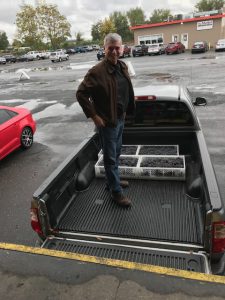
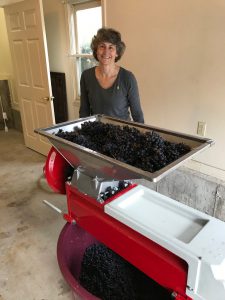
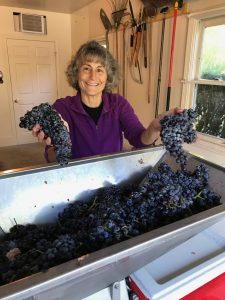

Knowing nothing about wine making, but with family heritage that included it, we retired on a Friday, attended our first Wine Making Bootcamp the following day, and thoroughly enjoyed each session! Frank Renaldi is not only an informative and highly capable wine maker, but he made sure each Saturday morning was great fun.
We had a really good time, made new friends, learned all the “basics” we needed to begin making wine, and came home with five gallons of great wine!
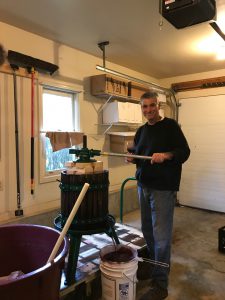
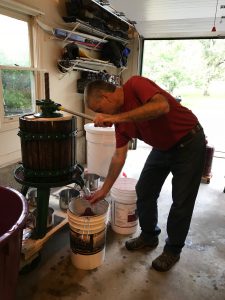

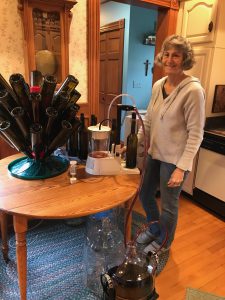
Since Bootcamp, and equipped with the knowledge it provided, we have been able to successfully make several batches of wine at home, and have even planted a small vineyard! Since becoming part of the “bootcamp family”, the Musto crew has been extremely helpful and supportive of our wine making ventures. We are very pleased that we decided to attend the Musto Bootcamp, and can’t imagine getting a better start into our new hobby!
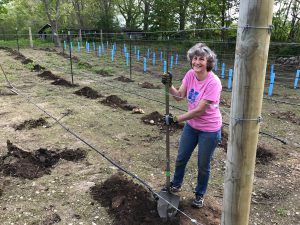

Michelle and Sam Shifrin
Why you’ll love Pinotage! From our grower Grettchen van der Merwe
Why Pinotage rather than other red wines?
Because it is different. Because it is uniquely South African. And because it allows you to strike a blow against the tyranny of the conventional.

The popularity of this variety unique to South Africa has steadily been growing in the US. The 2020 harvest is well underway and the Pinotage destined for US cellars is on its way. After careful vineyard selection the grapes that are deemed worthy are immediately cooled and packed by our friendly pack house ladies.
The attitude of reverence that many people have towards wine is perhaps best illustrated with the above quote. There are surely many reasons for drinking wine and as far as Pinotage is concerned it has many things going for it. For one, and most importantly it is enjoyable. Another is that is it red – somebody once said that the first duty of wine is to be red.
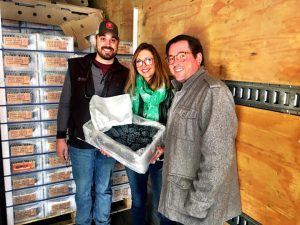
Yeast choice should be primarily based on alcohol and cold tolerance and secondarily on aroma production. Aeration during yeast rehydration is recommended for high risk fermentations (e.g. high sugar concentrations, potential nutrient imbalances and low temperatures). An enhanced estery character, suitable for wines that will be marketed earlier, will develop at fermentation temperatures of 22 – 24ºC. A less estery character, for full-bodied wines that will be marketed later, following wood maturation, is possible at temperatures of 24 – 28ºC. Fermentation at 28 – 32ºC is only recommended for full-bodied wines. Frequent mixing of skins and must by pump-overs or punch-downs is important. Skin cap temperatures exceeding 32ºC could potentially cause stuck or sluggish fermentations, or even bacterial spoilage.
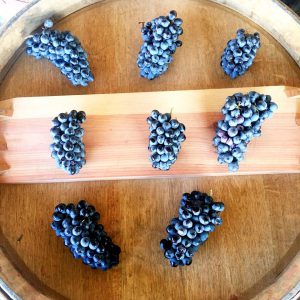
Frequent pump-overs or punch-downs during the early stages of fermentation will give less tannins as well as softer tannins. Concentrated aeration during the last phase of fermentation produces a softer tannin structure. Skin contact towards the end of fermentation or after fermentation depends on the required wine style, but pressing is usually done before completion of fermentation (2 to 8º Balling). Extended maceration is only recommended for wines made from healthy grapes harvested at optimum ripeness and that are destined for further maturation. Sensory evaluation on a daily basis is necessary.
By Grettchen van der Merwe
- To read more about the South African Wine Harvest click HERE.
- For more information about Grettchen and her winemaking click HERE.
- For more information about making Pinotage wine click HERE.
Questions? Or would like to make an order?
Call us at 877-812-1137 or email us at sales@juicegrape.com!
How to Make Wine in between Grape Harvests
So, it’s winter, my wine is settled in from the fall and I’m bored….
I know winemaking is a year long event, between racking, oaking, sulfiting, filtering, and bottling. But I just love the smell of Fermentation. The nutrient additions, the pressing, and the creation of another vintage for my wine cellar.
I know my wife will call me crazy, but I need to make more wine. But the fall winemaking season is over, right? Wrong! There are options to make wine all year round.
You could wait until April and get grapes and juice from South Africa. I have made the Cabernet and the Pinotage from grapes and both came out great. Believe it or not, the grapes came in clean and gorgeous.
You can wait until May and get a large selection from South America. I make the Malbec or Carmenere every year. They are Chile’s signature wines and they come out wonderful.
There is also an option of buying frozen must. These are grapes that Musto crushed and destemmed. The must is placed in 5.25 gallon pails and frozen. You take the 5.25 gallon pails home, let them thaw out and treat it like your usual must. The benefit of the frozen must is you get a free “cold soak” which creates a dark, full bodied wine. You can also purchase frozen white juice which is just as easy.
My final recommendation is the good old wine kit. Many new winemakers start off with kits, which is a good way to get introduced to this hobby. There are so many choices from all around the world. Even as a “grape” person, don’t be ashamed to make a kit. It rounds out your skills and allows you to make a Riesling from Germany – you can’t get those grapes in the fall!
Well, I hope I gave you some options to keep you busy during the winter “quiet” time for your fall wines. The more wine you make, the better you get. Trying these options will hone your skills and allow you to make other types and styles of wines for your wine cellar. So keep your wine making equipment out and enjoy your hobby all year long!
Written by Frank Renaldi, Musto Wine Grape Bootcamp & Winemaking Professor
Interested in making your own wine? Musto Wine Grape Company is here to help! We are New England’s largest supplier for home winemaking products and services. We can get you set up with all of your juice, grape and equipment needs and have you on track to making your own perfect pairing for next fall! Visit juicegrape.com or give us a call at (877) 812 – 1137 to learn more. We look forward to hearing from you!
Wine Spotlight: South African Pinotage
Pinotage wines are on the rise throughout the world.
Wine drinkers enjoy it because Pinotage is complex, yet light in body. Winemakers love working with the grapes because fermentations are for the most part simple and smell amazing. “Strawberry cotton candy” are descriptors we’ve heard in the past. Yet, despite it’s wonderful characteristics, it is still a wine that is relatively unknown and under rated.
The Pinotage Grape was created in 1925 and is a cross between two vinifera grapes, Pinot Noir and Cinsault. Abaraham Izak Perold created the grape to bring out the brilliant robust flavors that both Pinot Noir and Cinsault possessed, while making the grape easy to grow.
Pinotage is known to produce smoky, earthy flavors with hints of tropical fruits. We (MWG) source our Pinotage from the Breede River Valley. This is because the Breede River Valley produces wines that express notes of cedar, plums, and dark berry notes. The wine then rounds out with a smooth, tannic structure. Lots of complex and flavorful wines come out of this valley and now you can make your very own at home!
Quick Winemaking Tips:
- Please note that if you punch through too vigorously during fermentation you can get an almost burned plastic characteristic. It is better to ferment Pinotage at lower temperatures.
- The yeasts we recommend utilizing are D254, D80, and BDX
- Our Winemaker Bootcampers have made this serval times. If you ever have any fermentation questions please do not hesitate to reach out.
- Check out our blog post about making Syrah from South Africa too!
- Click here for information about our Grower from South Africa.
- Food Pairing: Enjoy these wines with a hearty stew or red meat.
Interested in making your own wine? Give us a call at 877-812-1137 to get started!
Winemaker Lab Skills Class – October 9th
Musto’s Winemaker Lab Skills Class will be held on Wednesday October 9th at 7:00PM.
Want clarification on TA, pH, and Adjusting Your Wine?
Then this is the class for you!
Professor Frank Renaldi will go over the following lab skills every winemaker needs. It can be difficult to feel comfortable testing your wine. However, Frank has some easy tricks and tips of how to test and adjust your wine.
Class Outline:
- Equipment & Supplies
- Volume Measurements
- Sugar, Content, & Adjustments
- Acidity, Content, & Adjustments
- pH
- Sulfites, Need, & Adjustments
- Blending
- MLF
- Sugar Addition
Sign up today and start sharpening your Winemaker Lab Skills!
Sign up via the website HERE or give us a call at 877-812-1137 to sign up over the phone. We look forward to seeing you in class. Cheers!
Adding pectic enzyme to your wine
Pectic enzyme at a glance
- AKA pectinase
- A protein that breaks down pectin within fruit
- Added to juice or must pre-fermentation
- No notable downside of using this additive
- Available in powder or liquid form
Right… but why is it important?
- Using pectic enzyme increases juice, tannin, flavor, and color extraction
- Aids in clearing wine by eliminating potential “pectic haze”
Who should use pectic enzyme?
If you’re making wine of any kind, whether from grapes or any other fruit, adding pectic enzyme will be a positive influence on the end result. Both home and commercial winemakers use pectic enzyme as a means of extracting the most they possibly can from their fruit.
When should I add it?
Since it works more slowly after fermentation has completed, add it beforehand. Add at the beginning of fermentation after temperatures have begun creeping up. It works best at around 80F; lower temperatures.
How much do I add?
For white juice/wine, 1-2g/hL. For red must/wine, 2-4g/hL. It comes in either powder or liquid form; depending on the producer the recommended dosage may be different so always be sure to double check the label before making an add.
What happens if I don’t add it?
Simply put, there’s no reason to not add it. Not adding it runs you the risk of having a pectic haze develop. This can be very tricky if not borderline impossible to fix later on; adding pectinase post-fermentation will also not work as well, if at all.
OK, I think I’ve got it now. But can we go over this one more time?
Adding enzyme post-crush/pre-fermentation increases free run juice, color and tannin extraction in both reds and whites, increases filterability and clarification, and lowers chances of pectic haze development. There are many options you can choose from for your pectic enzyme needs, either powder or liquid form.
2019 Winemaking Class Schedule – *UPDATED*
Musto Wine Grape’s Updated Winemaking Class Schedule
Oak Alternatives Class
- Saturday August 17th at 10:00AM
- Cost: $4.99 + tax
- Link: http://www.juicegrape.com/oak-alternatives-class/
Fermentation Planning Class
- Saturday August 24th at 10:00AM
- Cost: $4.99 + tax
- Link: http://www.juicegrape.com/Fermentation-Planning/
Making Consistently Flawless Wines with Daniel Pambianchi
- Focused in fermentation science, both alcohol and malolactic, understanding and managing pH and TA changes during fermentation, and advanced wine analysis skills.
- Saturday September 7th
- Cost: $250.00
- Link: http://www.juicegrape.com/Seminar-Daniel-Pambianchi/
Winemaker Bootcamp
- Musto’s hands on winemaking class. Learn how to make wine in class from start to finish.
- Session 1: Starts Saturday September 21st – 9:00AM-12:00PM for 5 consecutive weeks
- Sessions 2: Starts Saturday October 19th at 1:00PM-4:00PM for 5 consecutive weeks
- Cost: $150.00 for class
- Cost of Adding Grapes: TBD – depends on which grapes the class is working with. You will find out the this cost the day of class
- Link: http://www.juicegrape.com/EDUIBL-5-WEEK-WINEMAKING-BOOTCAMP/
Winemaking 101
- Learn the basics of making wine at home
- Date: TBD
- Cost: $75.00
- Link: http://www.juicegrape.com/Education-Intro-to-Wine-Making-101/
Winemaking 201
- Learn the basic lab skills needed to take your winemaking to the next level
- Date: TBD
- Cost: $75.00
- Link: http://www.juicegrape.com/Education-Intro-to-Basic-Lab-201/
We look forward to seeing you in class! Please email Christina at cmusto@juicegrape.com with any questions about our winemaking classes.
How to Make Tempranillo Wine
Taking on Tempranillo
This thick skinned complex berry bomb will fill your palate with notes of ripe red cherry, blackberry, baking spices, strawberry jam, cocoa powder, tobacco, and black pepper. A fresh, vibrant, meaty wine ready to be drunk young or cellared for extra complexity. Sounds delicious doesn’t it?
Wine breakdown: Fruit forward with earthy qualities, usually oak aged 6-18 months in French or American Oak, med (+) tannin, med (-) acidity
Yeast Suggestions: VRB yeast is our top suggestion due to its consistent fermentation rate and enhancement of flavor complexity while softening tannins. This yeast helps improve the mid-palate structure, showcase black and red fruit flavors, and works well with malolactic fermentation. Originating from Logroño, Spain this yeast is the perfect pairing to your Tempranillo fermentation.
Tempranillo Available this Fall:
– Grapes from King’s River Ranch, Sanger, CA
– Grapes from Lanza-Musto Vineyards, Suisun Valley, CA
– Juice from Central Valley, CA
Winemaking Tips: We suggest the addition of the following additives when working with Tempranillo
– Fermentation:
o Tannin FT Rouge to help preserve the Tempranillo’s natural tannins and help preserve color. Add at the beginning of fermentation. Sprinkle into the must and punchdown.
o Booster Rouge helps enhance your wine’s color, tanninc structure, and fresh varietal aromas if you your fermentation is shorter than the grape usually needs. If you don’t have a temperature controlled cellar this is a cheap and easy tool to help enhance and maintain your fruit/wine quality. Add at the beginning of fermentation. Mix with a little distilled water, mix it up so that there are little to no clumps, mix into must.
o Opti-Red helps your wine obtain fuller body, more stable color (helps protect against oxidized color changes), and smooths the palate. Add at the beginning or towards the end of fermentation. Mix with a little distilled water, mix it up so that there are little to no clumps, mix into must.
o Maloactic Bacteria addition
– Aging:
o Oak Chips
o Oak Spirals
o Oak Barrels
If you don’t want to do a 100% Tempranillo, but are interested in blending we have a few interesting blends for you to try. Tempranillo blends well with Grenache, Cabernet, and Syrah.
Australian Style: 65% Tempranillo, 25% Grenache, 10% Syrah
Spanish Style: 95% Tempranillo, 5% Grenache or Syrah
Rioja ”Crianza” Style: 95% Tempranillo, 5% Grenache + Age for 2 years in a French or American Oak barrel.
Rioja ”Reserva” Style: 95% Tempranillo, 5% Grenache or Cabernet or 100% Tempranillo + Age at least 1 year in barrels and 2 years in bottle
Rioja ”Gran Reserva” Style: 95% Tempranillo, 5% Grenache or Cabernet or 100% Tempranillo + Age 2 years in barrel and 2 years in bottle
Rioja ”Gran Anada” Style: 95% Tempranillo, 5% Grenache or Cabernet or 100% Tempranillo + Age at least 3 years on the lees in barrel. Grapes must be hand harvested.
Tempranillo is show stopping, crowd pleasing wine for everyone to enjoy. A great addition to any red wine drinkers cellar. Please call 877-812-1137 or email sales@juicegrape.com for more details.
2019 Winemaking Class Schedule

Start the year off right with Winemaking Classes! Learn new tricks and tips, or start your first batch.
Musto Wine Grape has a winemaking class for everyone!
Free Winemaking Classes:
-
Working with Chilean Wine Grapes & Juices – Saturday May 4th at 10:00AM -
New England Viticulture – Saturday May 18th at 10:00AM -
SO2 Management – Saturday July 13th at 10:00AM -
Working with Hybrid Grapes in the Winery – Saturday July 13th at 10:00AM
$4.99 Winemaking Classes:
- Oak Alerntatives Class – Saturday August 17th at 10:00AM
-
Fermentation Tips & Planning – Saturday August 24th at 10:00AM
-
Making Wine from Juice – Saturday September 14th at 10:00AM
Winemaker Bootcamp Classes:
-
Chilean Bootcamp – Starts Saturday May 25th at 9:00AM
Daniel Pambianchi Seminar:
-
Saturday September 7th, 2019
Winemaking 101:
-
Spring classes: TBD Fall 2019
Winemaking 201:
-
Spring classes: TBD Fall 2019






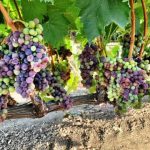
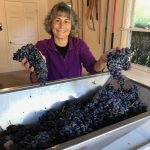

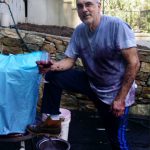


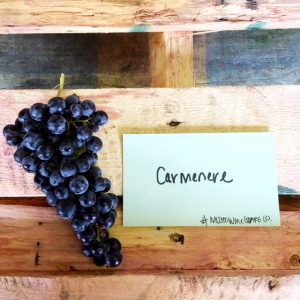
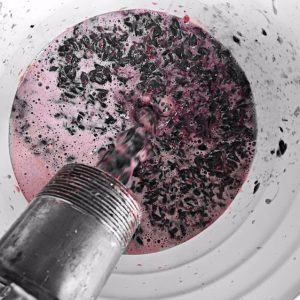
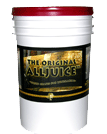
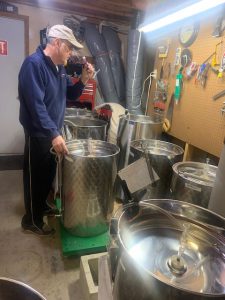

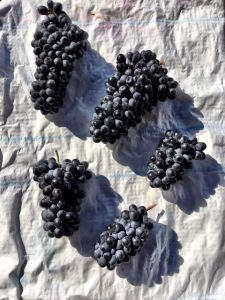

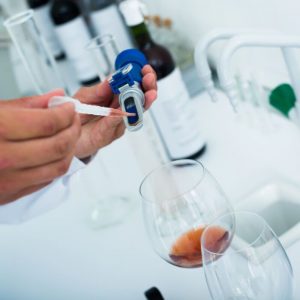


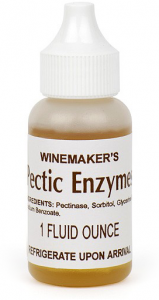


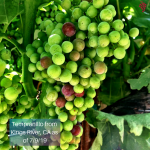
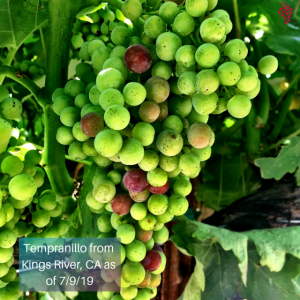

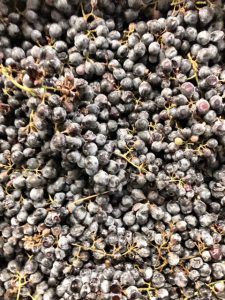

Recent Comments